Catherine the Great, Empress of Russia, reigned from 1762 until 1796, longer than any other Russian female head of state. But behind all the stories and spurious rumors, who was this woman, really? Underlying the legends may have been an even more interesting woman, one who plotted and executed her own rules for her public – and private – life.
◊
What do we know about Catherine the Great, 18th century empress of Russia? Is it possible that what we think we know is meager compared to her actual life and accomplishments? Or worse, could much of our perception be colored by centuries-old rumors and lies concocted to diminish her stature in history?
Young Catherine: The Girl Behind the Legend
Just as Catherine was not always “Great,” she wasn’t even always “Catherine.” Born in 1729 in the Kingdom of Prussia, Catherine was named Friederike after her uncle, King Frederick II of Prussia, known in his lifetime and warmly remembered as “Frederick the Great.” By her family and close relations, she was called “Figchen,” a diminutive term of endearment. Her official name was much grander: Princess Sophie Friederike Auguste von Anhalt-Zerbst-Dornburg.
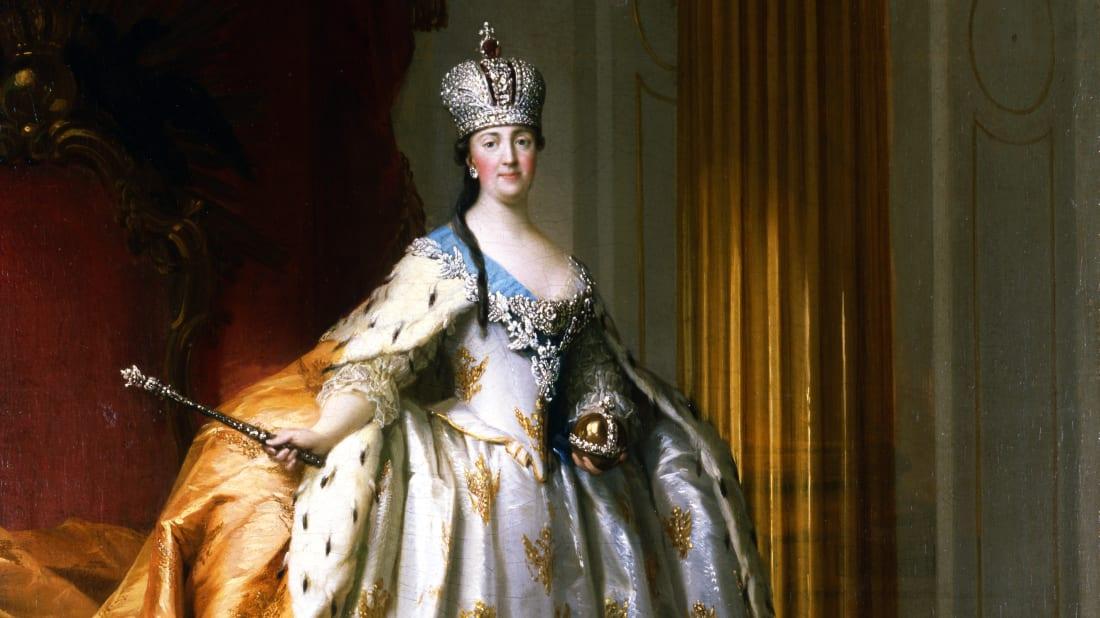
Empress Catheriine II, portrait by V. Eriksen (detail), c. 1778-79 (Source: Wikimedia Commons)
Though her lineage was impressive (she also had cousins in the ruling family of Sweden), Catherine’s family wealth was much less so. In fact, while not destitute, she was most definitely not born into wealth.
Betrothal to Peter Fedorovich
Due to their financial situation, Catherine’s family was quite determined that she marry well. So, she understood from an early age that she would be betrothed to someone in the line of succession to become emperor of Russia. As it turned out, that person was no stranger to her; in fact, they knew each other as children. He was Catherine’s second cousin, Peter Fedorovich, a member of the ruling Romanov family and heir presumptive to the throne then occupied by his aunt, the Empress Elizabeth.
Catherine’s mother-in-law (and distant aunt) Elizabeth was a highly revered, “enlightened” ruler of Russia. However, she was no saint.
Catherine’s Mentor and Predecessor, Empress Elizabeth
Elizabeth of Russia was revered during her reign. As empress, she was a renowned patron of the arts and education, and was respected for not executing any Russian while she occupied the throne. However, she could rule with an iron fist. Those who incurred her disfavor were often punished harshly, with penalties including exile, imprisonment, torture, or being declared “nonpersons” and relegated to lives of practical nonexistence in prison till their deaths.
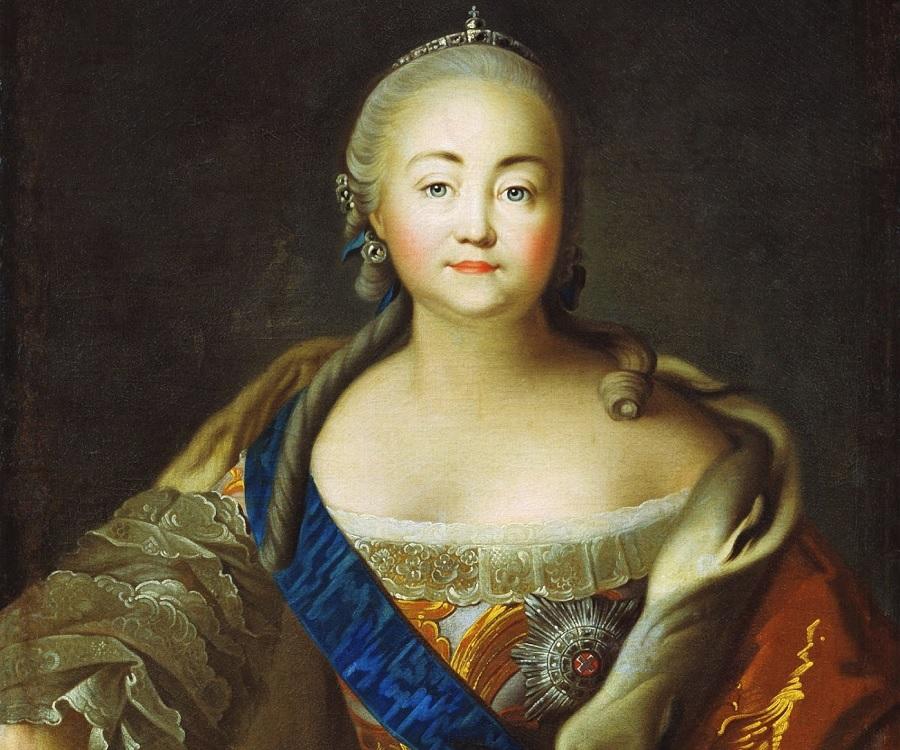
Elizabeth I of Russia, portrait by I. Argunov, c. 1850-60 (Source: Wikimedia Commons)
Moreover, on the international stage, Elizabeth became notorious for fierce military campaigns to expand Russia’s borders and fill the country’s coffers with treasure. The most notable of these conflicts were the War of Austrian Succession and, more consequentially, the Seven Years’ War of 1756–63.
The Seven Years’ War initially pitted Russia, aligned with France, against Prussia, which was allied with the other chief combatant in the war, Great Britain. To complicate matters, Russia switched sides in the final year of the war (after Elizabeth’s death and the ascension of her nephew Peter to the throne), aligning itself with Prussia and against Austria.
Empress Elizabeth’s Concern With Succession
A dominant theme of Elizabeth’s reign was her effort to prepare a strong succession for Russia’s next ruler. Since she was unable to bear children, the succession plan had to be created virtually out of whole cloth. She eliminated some pretenders to the throne through disappearance and imprisonment, and she selected Peter as her presumptive heir. To complete the plan, she chose a wife for Peter as well – Ekaterina, the future Catherine the Great. (In Russian transliteration, Catherine’s name is Ekaterina.)
Peter and Catherine – A Match Not Made in Heaven
As marriages go, Peter and Catherine’s left a lot to be desired. By all accounts, they didn’t care for each other, didn’t share interests, and were often at opposite ends of crucial arguments in the Russian court. Catherine, for example, converted to the Eastern Orthodox Church and became a devotee of the Church and its dogma; whereas Peter, who had also converted, was a much less devoted follower and, in fact, renounced Eastern Orthodoxy in favor of Lutheranism when it suited him.
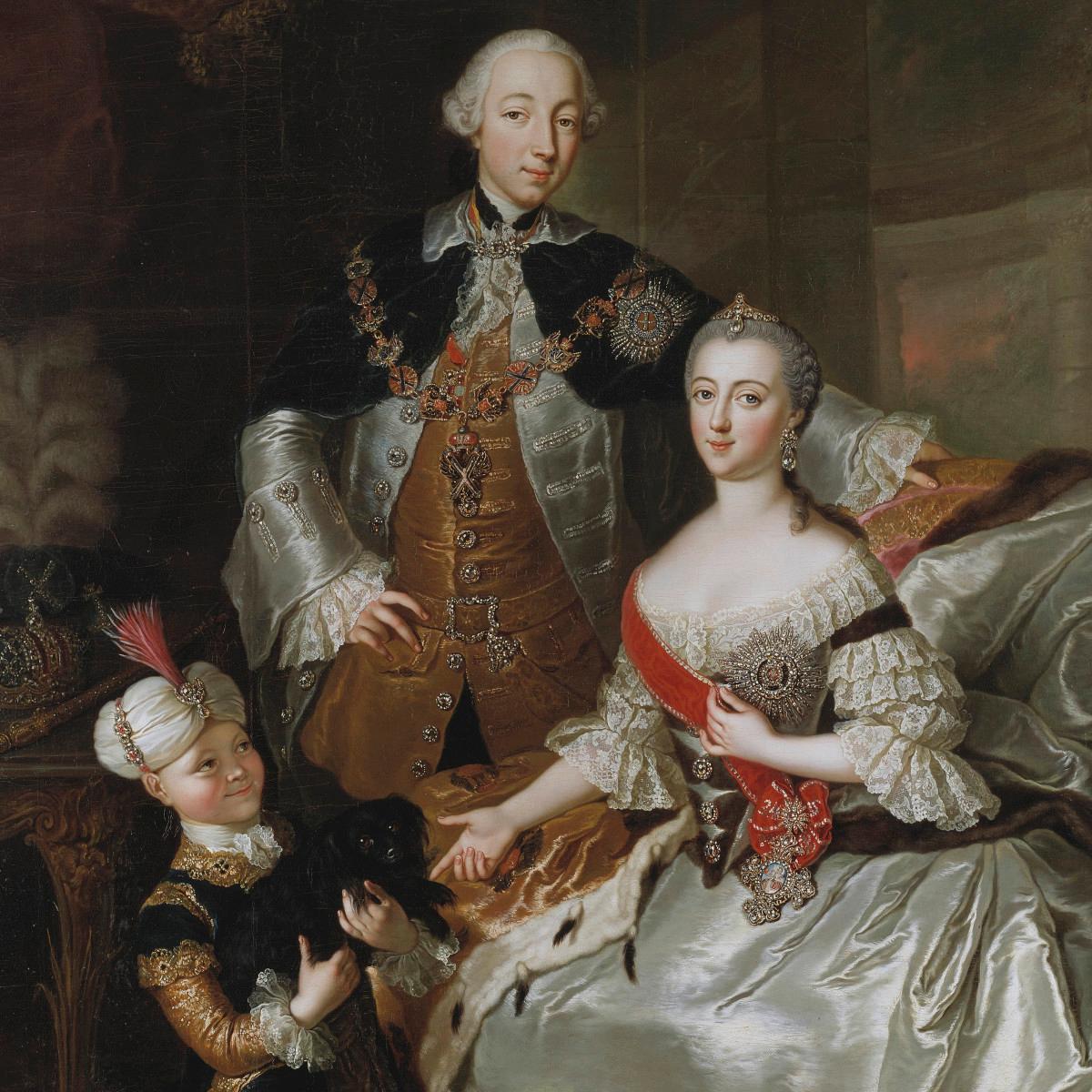
Grand Duke Pierre Fiodorovich and Grand Duchess Catherine Alexeïevna, with page, by Anna Rosina de Gasc, 1756 (Source: Wikimedia Commons)
They lived their private lives quite separately as well. Stories about their mutual infidelities, though grandly embellished over time, possess more than a grain of truth. Despite bearing four children (including a son, Paul, who eventually succeeded Catherine to the throne), many believed rumors that the royal marriage between Peter and Catherine was never consummated and that her children were therefore illegitimate.
Naturally, we aren’t privy to what did or didn’t happen in the royal couple’s bedchambers. But clearly the problem was not infertility, and the identity of the natural father (or fathers) of Catherine’s children remains a matter of conjecture.
One needs only read Catherine’s memoirs to find her account of Paul’s true parentage.
Peter III’s Brief and Tumultuous Reign
To assert that Peter III’s reign was controversial would risk understating the facts. In only six months of rule, his policies and edicts veered sharply from Elizabeth’s, causing great consternation in the court. It was he who switched sides in the Seven Years’ War, outraging his military leaders and complicating Russia’s diplomatic relations.
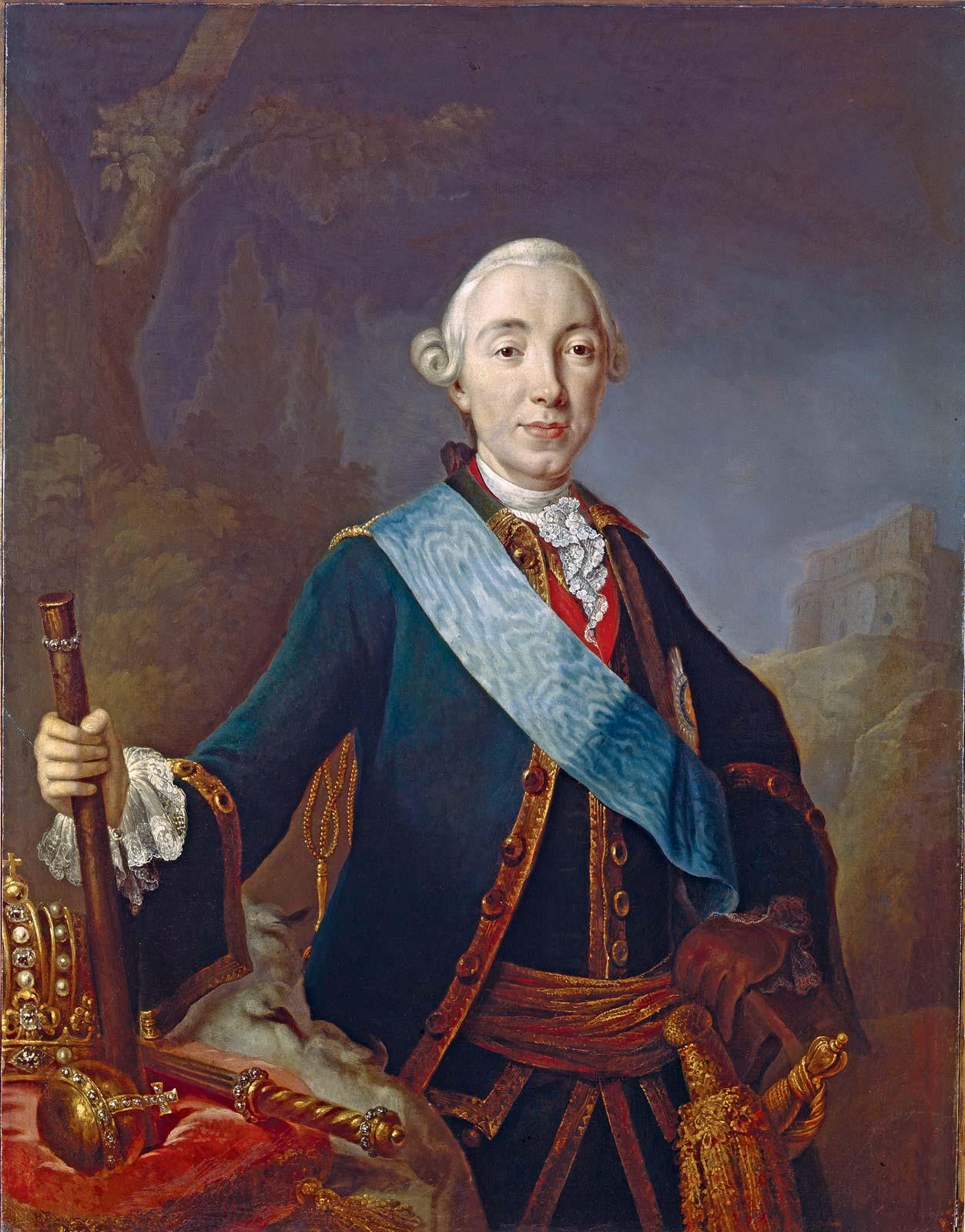
Peter III of Russia, coronation portrait by Lucas Conrad Pfandzeit, 1761-62 (Source: Wikimedia Commons)
Peter was equally disruptive of domestic policy. He proclaimed religious freedom within Russia, and further antagonized the Orthodox Church by secularizing Church property and elevating the status of serfs who toiled on the Church’s lands. Decrees regarding the rights of serfs also alienated much of the landed gentry who had previously exercised total life-and-death authority over the peasants. Among the reforms he instituted was a provision that gentry who deliberately killed serfs could be charged with murder. Today, we might see these reforms as enlightened; but at the time, Peter was unable to win the support of the Russian elites, thereby thrusting his court into chaos.
And, as if he hadn’t made enough enemies already, Peter’s abolition of Russia’s Secret Police earned the enmity of all who benefited from its services while simultaneously eliminating a tool to control dissent – and no doubt inadvertently opened a path for the rise of Catherine.
Did Catherine Conspire to Depose Peter?
It should come as no surprise that Peter III’s fall from power led to rumors of Catherine’s complicity in his fate. After all, his removal from the throne was followed in short order by her coronation as empress, and ultimately his death. Did Catherine have a role in his demise?
There is no doubt that Catherine disapproved of Peter’s headlong rush to grant greater freedom to the serfs at the expense of the power and privilege traditionally enjoyed by the Church and gentry. Catherine had come to embrace the perspective of the royal court and its hidebound, hierarchical view of Russian culture and society, and she was not silent in her criticism of her husband’s actions.
Catherine’s role in the ultimate fate of her husband, Peter III, remains one of the great unknowns of Russian history.
Charges of treason against Peter were bandied about, and, while not calling him a traitor herself, Catherine was sympathetic to factions within the imperial court and the military that opposed his policies. Whether the rise of Catherine to become empress was helped along by machinations of her own against her husband is uncertain. It is, in fact, one of the great unknowns of Russian history, though there is no shortage of theories and conjecture on the issue from many sides.
Peter’s Fall, and the Rise of Catherine
What we do know is that Peter III was taken into custody and imprisoned, Empress Catherine II of Russia ascended to the throne, and Peter’s date with death arrived rather rapidly. Did forces sympathetic to Catherine assassinate him, as some have alleged, or did he die accidentally in a drunken brawl with forces that actually supported him?
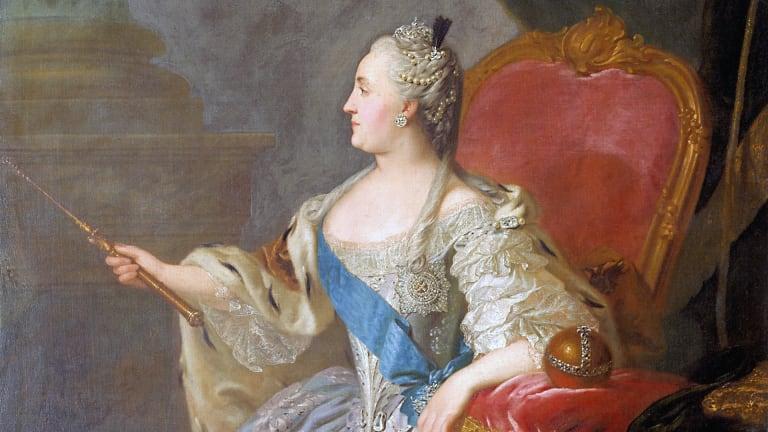
Empress Catherine II of Russia, portrait by Fyodor Rokotov, 1763 (Source: Wikimedia Commons)
One strong suspicion is that Peter was murdered by a military officer, Alexei Orlov. He was the brother of Grigory Orlov, Catherine’s great love of the time and a very credible candidate for having been the father of her firstborn son, Paul. But indisputable facts concerning the Orlovs’ possible connection to Peter’s death are hard to come by, and several other theories are equally plausible.
Among the less credible stories was a rumor that Peter hadn’t died at all. It is true that someone claiming to be Peter actually attempted to lead a rebellion against the empress, going so far as to win some territory, including the town of Kazan. But, when Catherine finally took the revolt seriously enough to respond with force, the pretender was unmasked as a sympathizer of the deposed ruler. Catherine, no stranger to cruel treatment herself, made sure his execution was a public one to quell the “Peter-is-alive” rumor-mongering.
Catherine’s Claim to Greatness – and Attempts to Undermine Her
Having ascended to power, Catherine proceeded to establish a legacy that far exceeded her mentor, Empress Elizabeth. Her exploits in foreign affairs, her mastery of the art of war, and her deep devotion to the arts and culture led to her eventual recognition as Catherine the Great.
No weapon in Catherine’s antagonists’ arsenal was more devastating than outrageously lascivious rumors.
But, as her accomplishments piled up, so did envy, intrigue, and concerted efforts to undermine her authority and her vision for Mother Russia. Perhaps no weapon in her antagonists’ arsenal was more devastating to Catherine in life and after her death than the dissemination of outrageously lascivious rumors. Combined with grandiose legends and over-embellished stories of Catherine’s reign, the innuendo and maliciously repeated myths have made sorting fact and fiction a challenge, to say the least.
Ω
Kevin Martin is Senior Writer for MagellanTV. He writes on a wide variety of topics, including outer space, the fine arts, and modern history. He has had a long career as a journalist and communications specialist with both nonprofit and for-profit organizations. He resides in Glendale, California.

